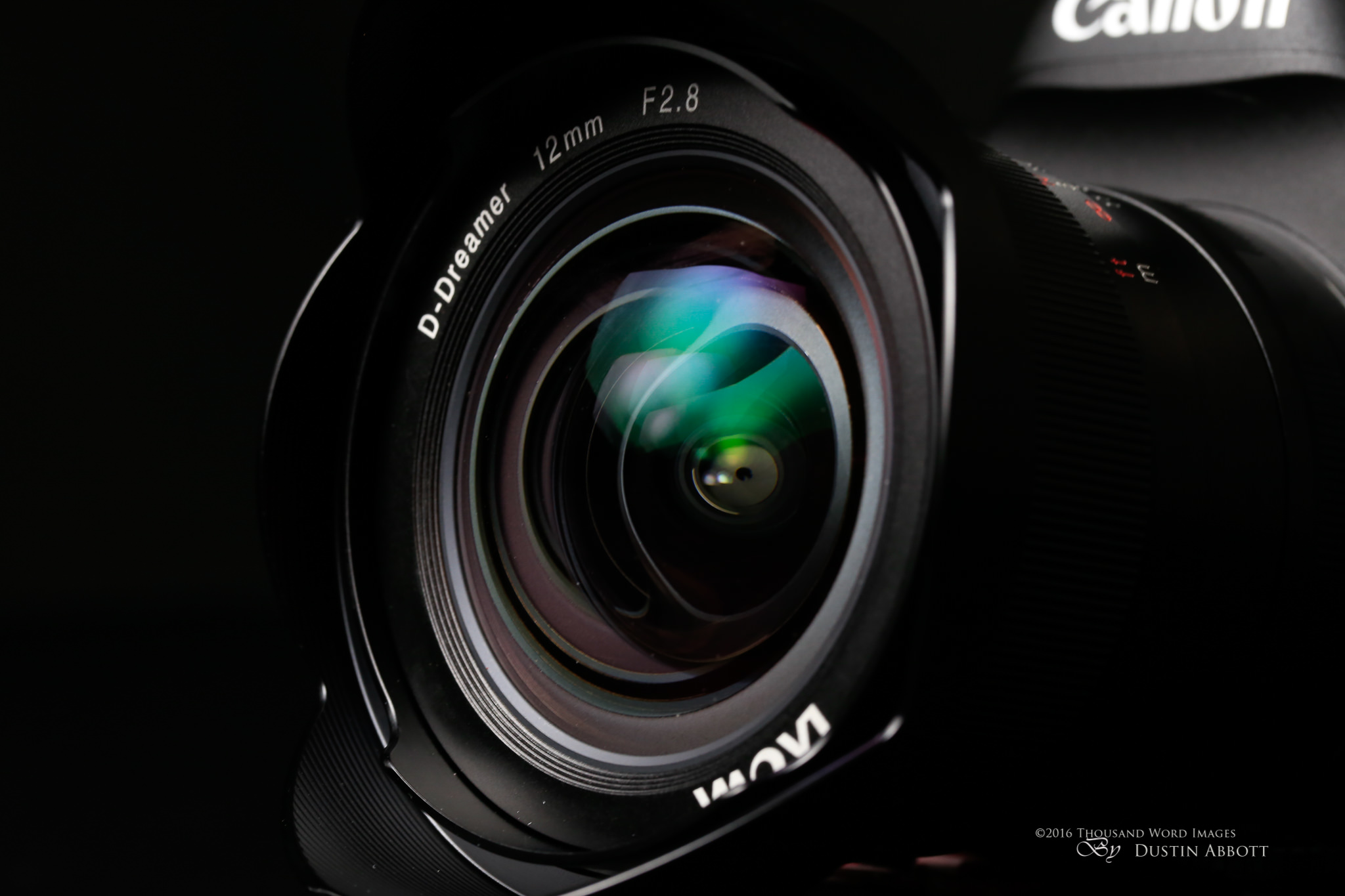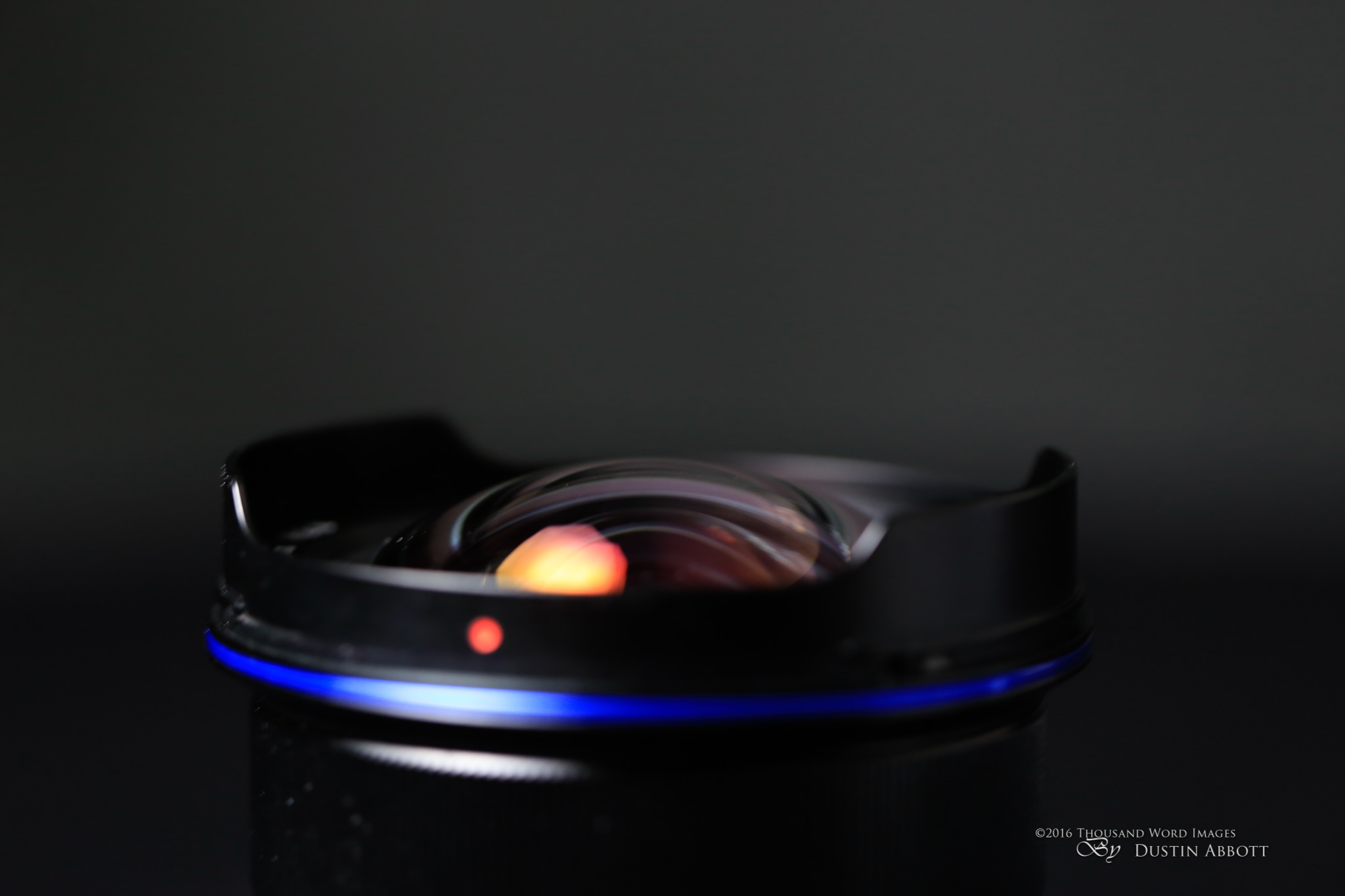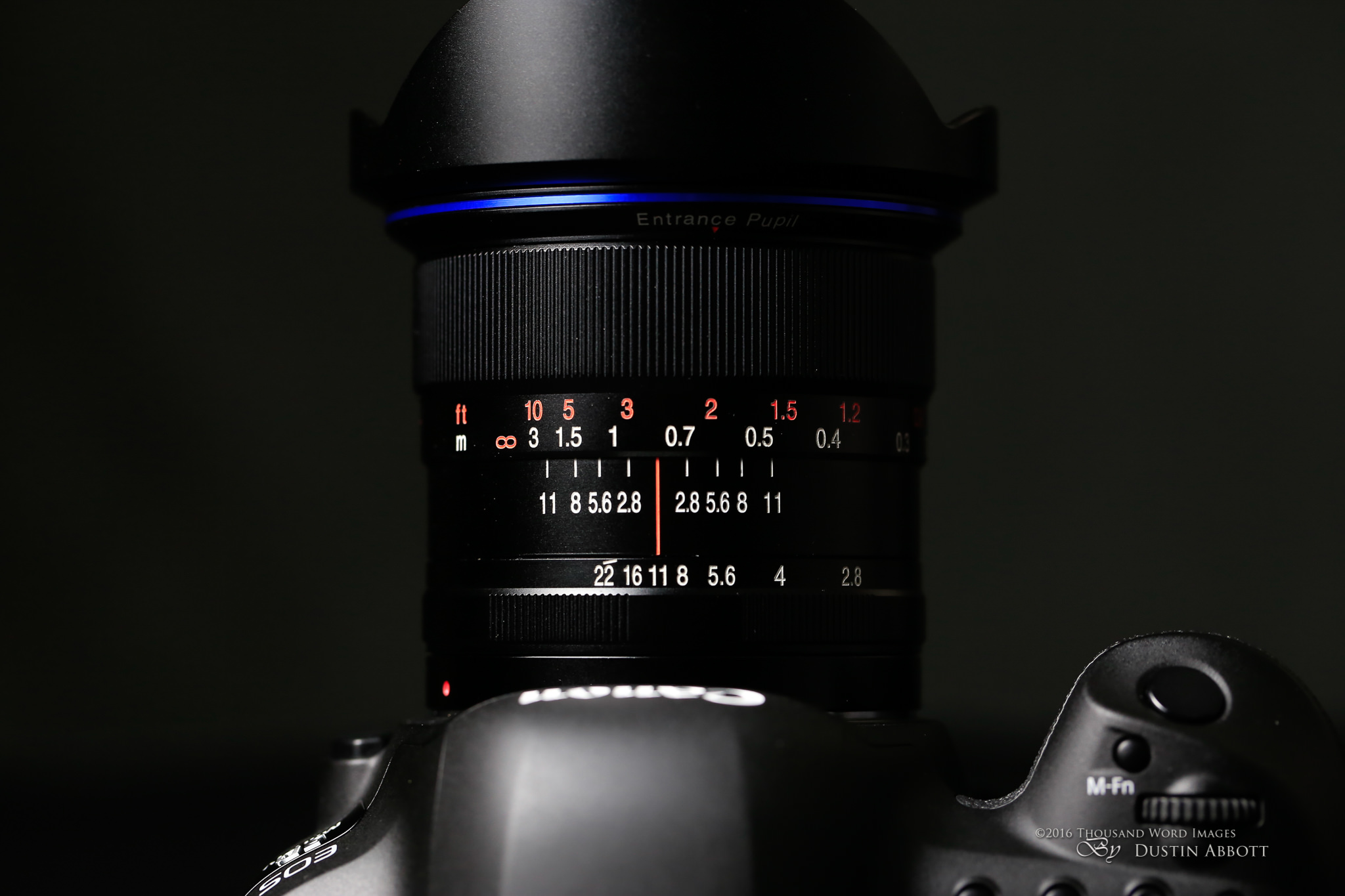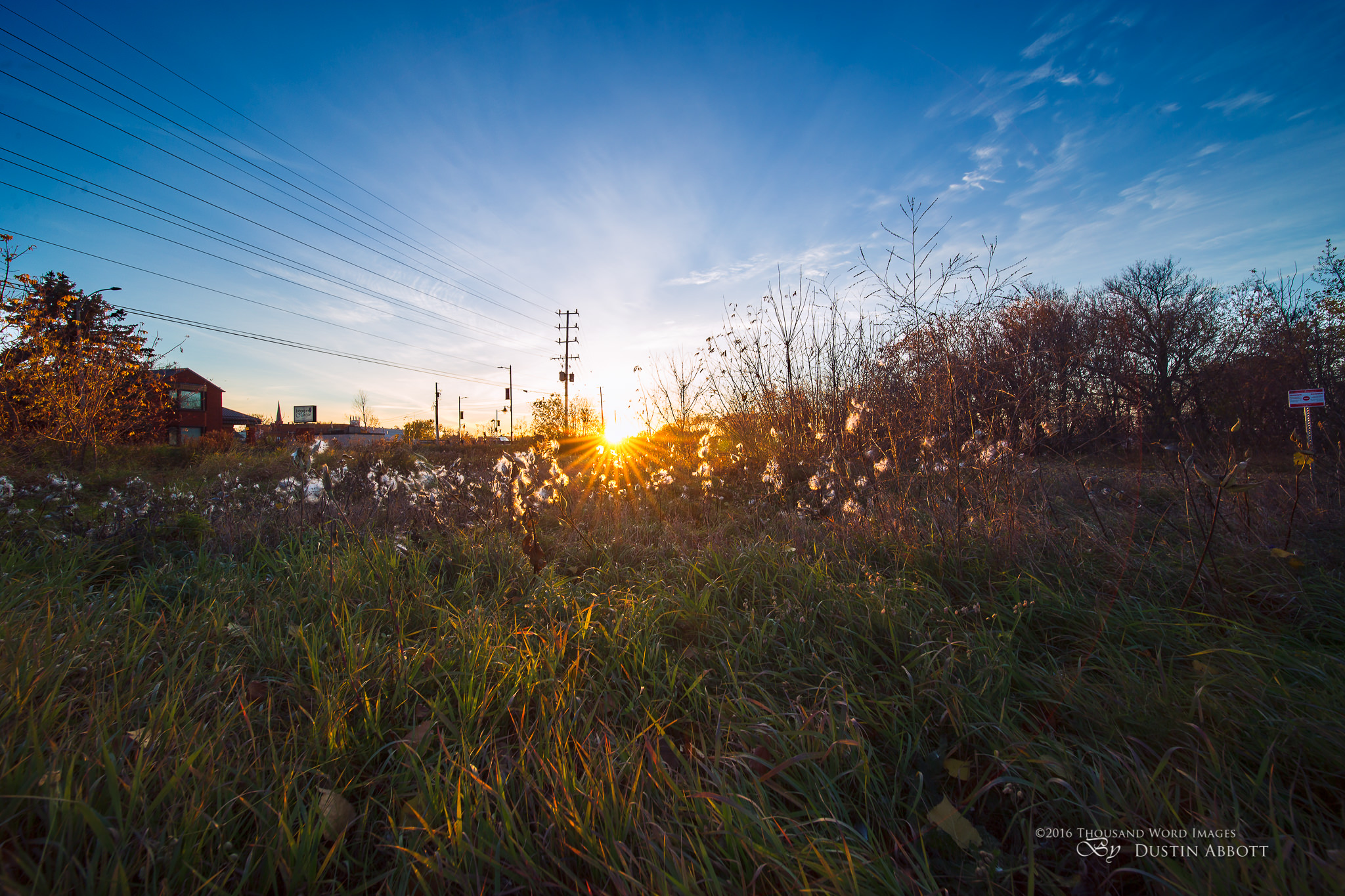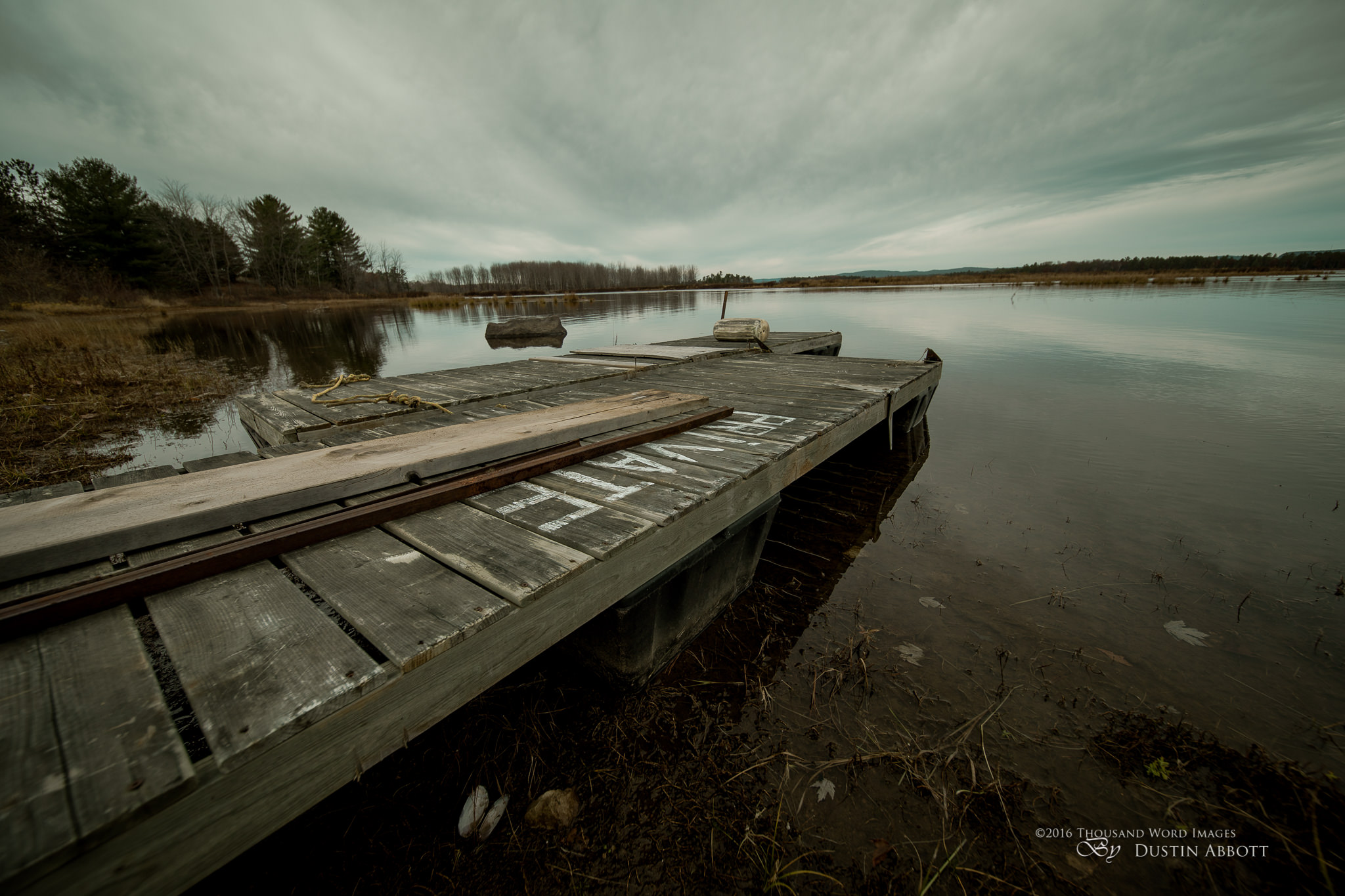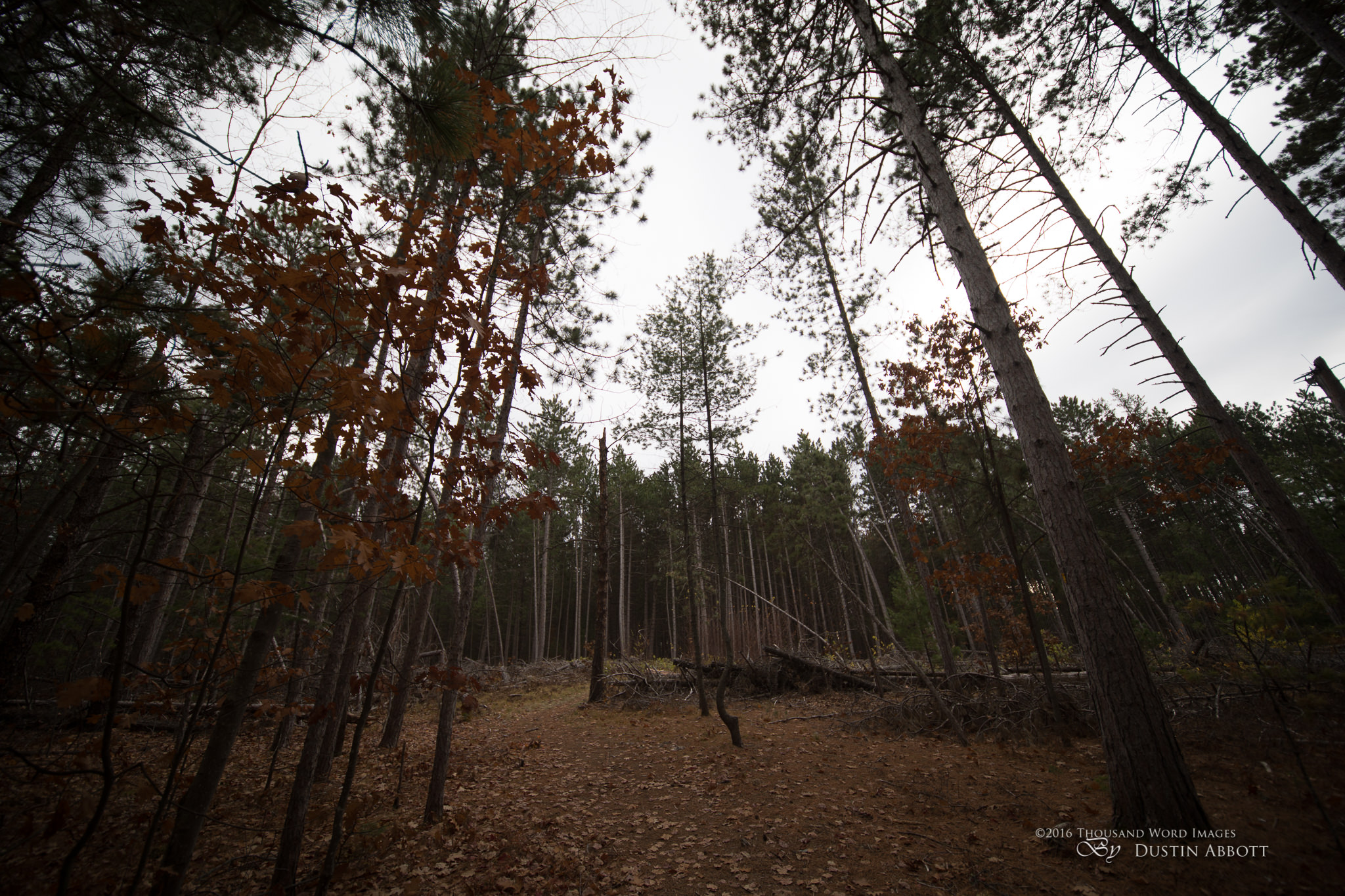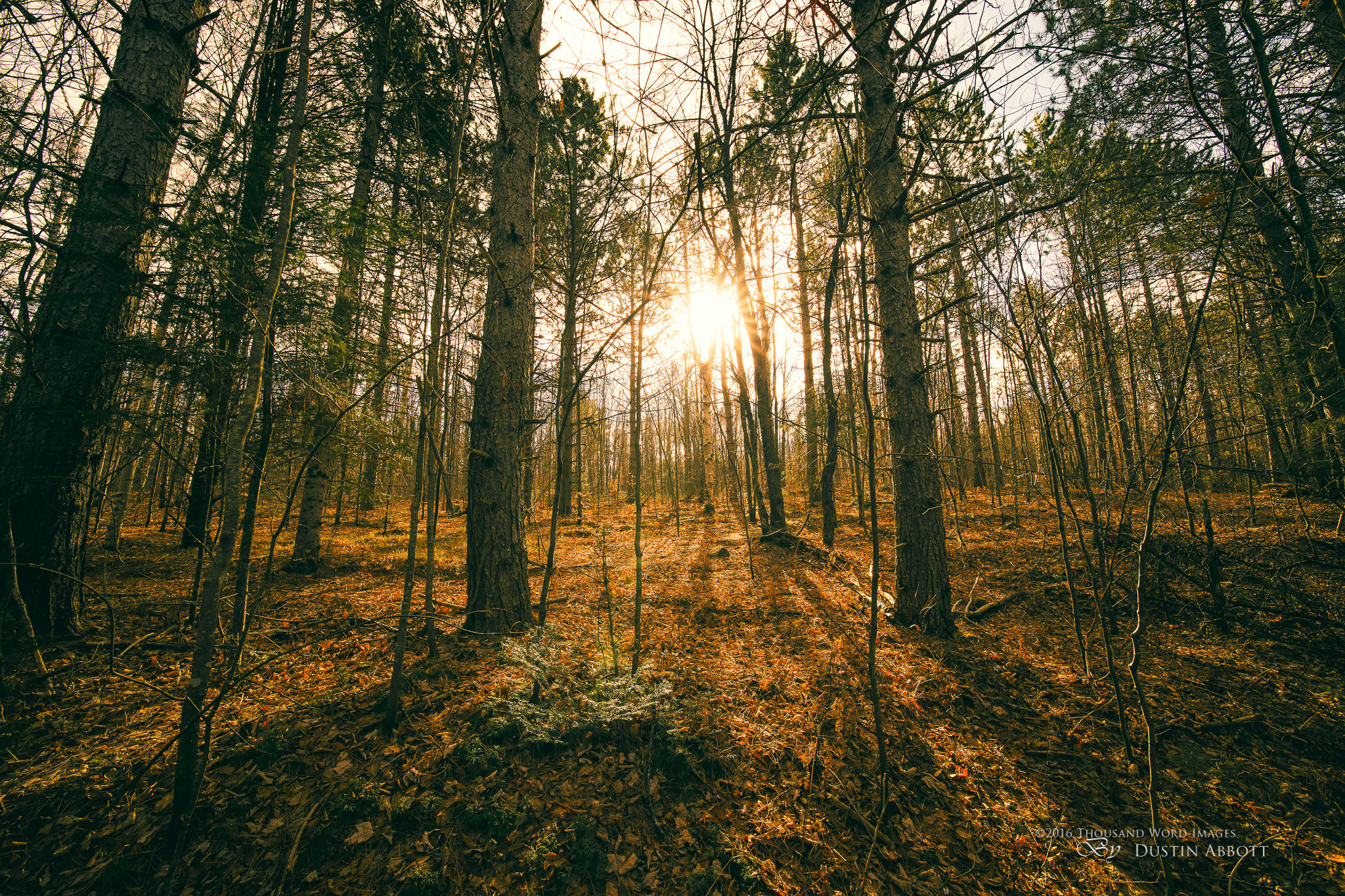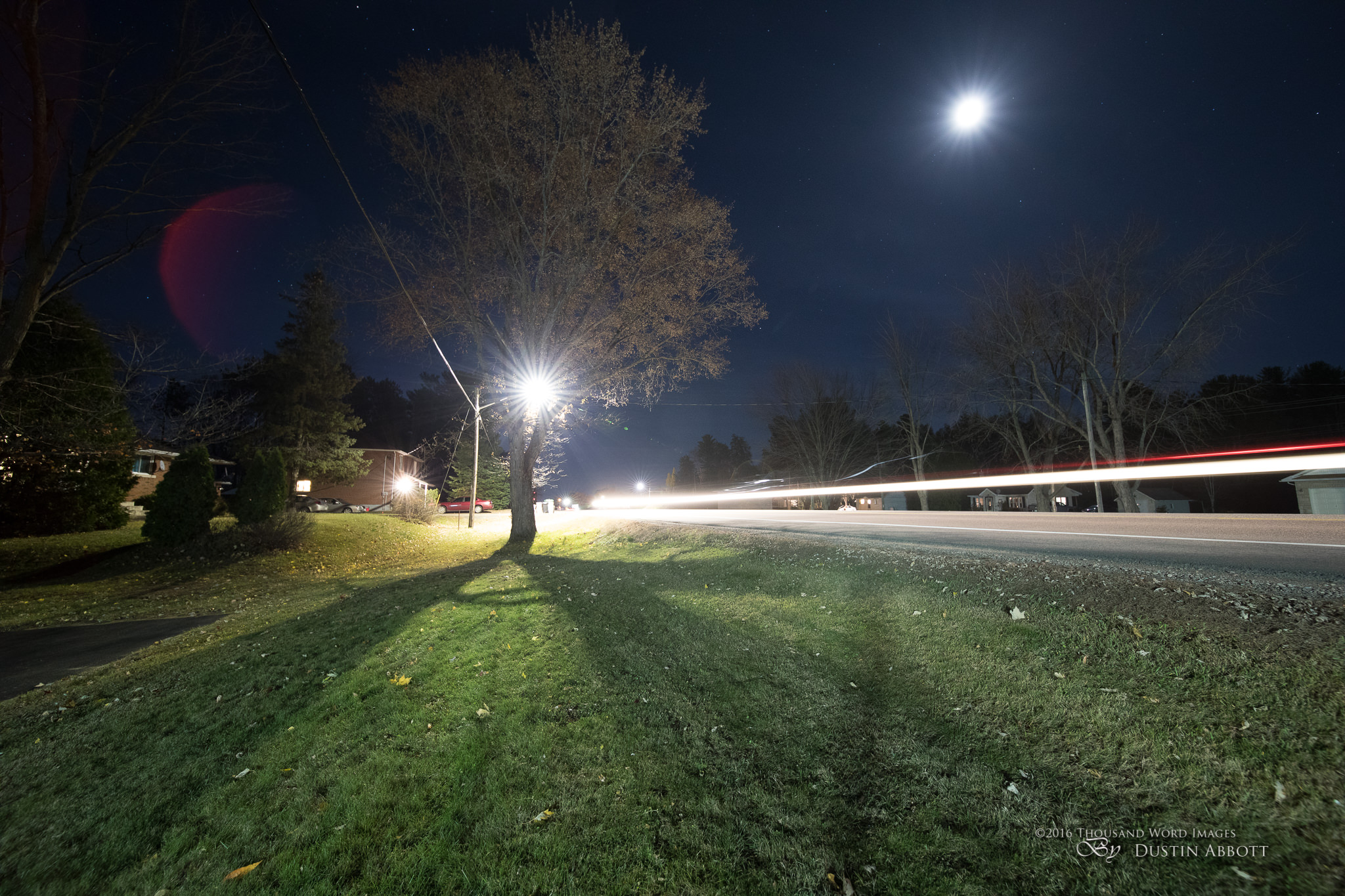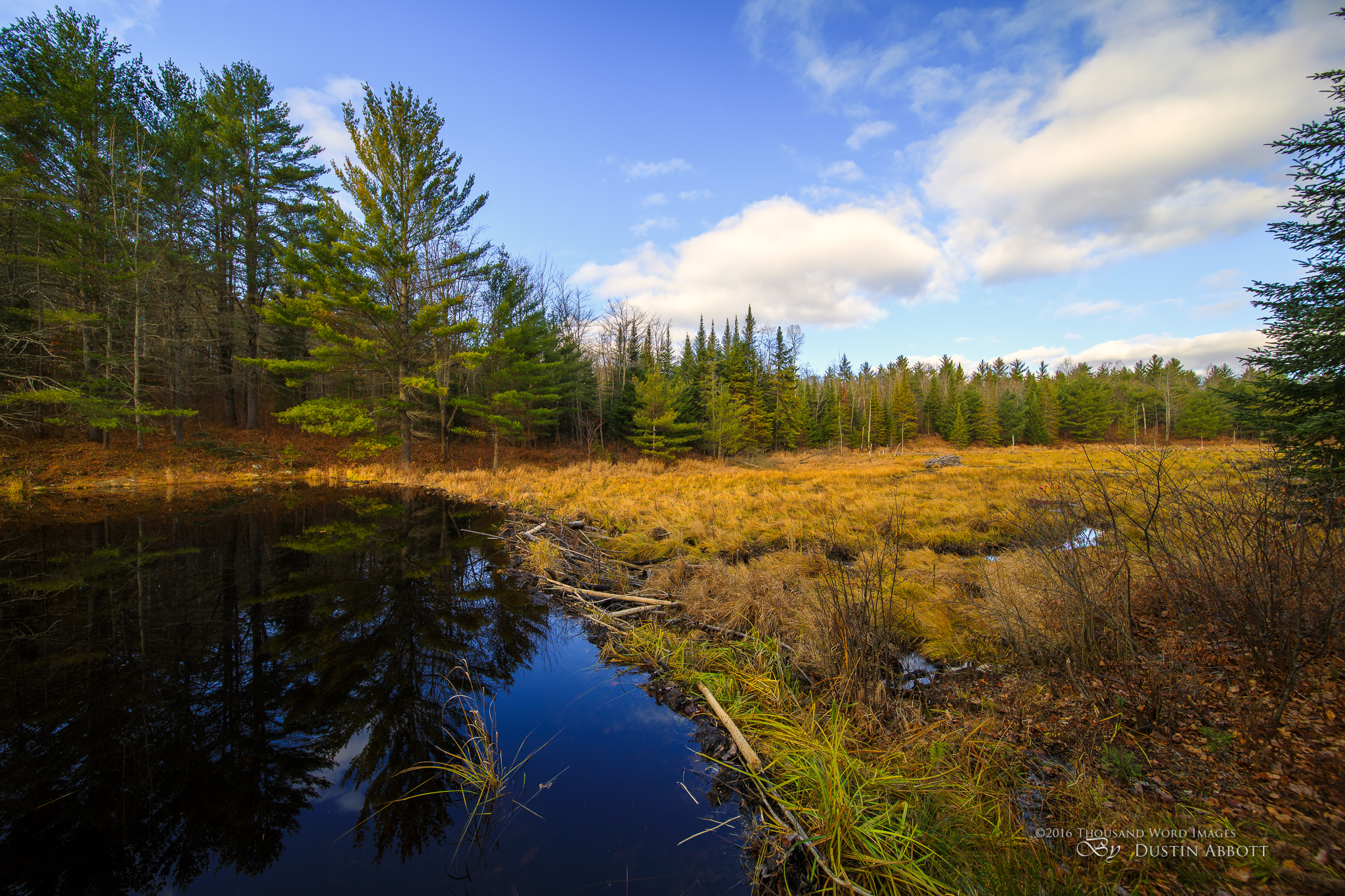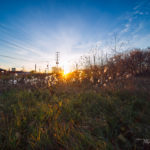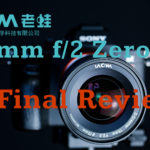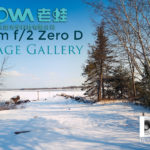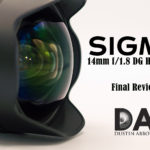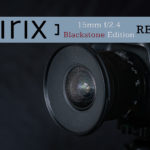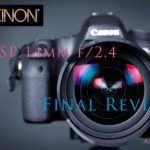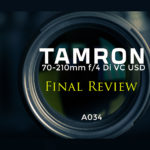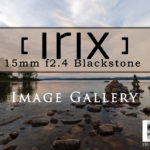Venus Optics is a new lens manufacturer from China that was founded by a group of macro enthusiasts who wanted to push the envelope of what was possible in macro. Their website notes that in particular they were interested in having greater than 1:1 Macro without the use of extension tubes or teleconverters. They started designing and producing lenses sold under the Laowa brand. In the few years that they have been in operation they have forged an identity as a company that makes unique products, including a 60mm f/2.8 2:1 Macro along with a unique 15mm f/4 1:1 wide angle macro. But their newest lens is by far the most interesting to me personally, as it both fills a need in the photography lineup (a quality super wide prime) while offering a very unique quality – a complete lack of distortion. Getting a distortion free rectilinear 12mm full frame coverage would be a very impressive feat. The Canon 16-35mm zooms achieve a maximum angle of view of around 108 degrees, while the Tamron 15-30mm zoom achieves a slightly wider 110 degrees. But the Laowa? Almost 122 degrees! The Laowa 12mm f/2.8 Zero D is a lens that is very intriguing both in its concept…but also execution.
Prefer to watch your reviews? I’ve got you covered. Just click the video below and watch away!
Build and Handling
If you love classic, extraordinarily well-made lenses, then you will be delighted with the Zero D. It feels a LOT like the classic Zeiss lenses, both in the feeling of density (due to all metal and glass construction) and the beautiful build quality (ditto). Like the classic Zeiss lenses it is exquisitely made but without true moisture resistance. That’s really about the only gripe I can come up with regarding the build, though I’ll temper that by noting that the front element doesn’t move and the design of the rear element is such that at no point in the focus range am I able to see inside the lens.
It reminds me of the excellent Canon EF 35mm f/1.4L II in that regard. I actually think this lens should be very dust resistant, and as there are no internal electronics, some light moisture probably isn’t a huge issue either. Laowa even touts that the front element has received their “Frog Eye Coating” (Laowa means “old frog”) that is supposed to repel dust and moisture (perhaps akin to a fluorine coating). If one were just to ignore the branding on the lens it would be easy to convince yourself that you were holding a Zeiss lens.
Everything is beautifully made here. The lens has a nice, semi-gloss black finish on the metal surfaces. The fit and finish is all very, very nice; there is nothing that feels “budget” other than the rear cap that lacks any kind of branding. There is a very fine silver ring close to the lens mount along with a nice blue ring near the bayonet mount for the lens hood. The Zero D has an interesting configuration there. There is a removable metal lens hood (fairly shallow with a petal shape) that can be reversed for storage, but there is also a smaller fixed metal hood (extremely shallow) that helps to protect the protruding curved front element. The former is clearly for adding shading for the front element (and added protection), while the latter is there to protect the front element from knocks. My review copy didn’t have the lens cap included so I couldn’t evaluate that.
It is very rare for such a wide focal length to have anything but a curved front element (I have the Tamron 15-30 VC, Sigma 12-24mm f/4 ART in hand and they are the same), but there are downsides to this configuration. The big one is that traditional screw-in filters are out. You will have to rely on third party filter systems to allow for the use of filters. But Laowa has been very smart about this, too, and they will be selling a filter adapter at a very reasonable price ($75) that will allow you to use 100mm square filters (Cokin, Lee, etc…) Also interesting is the coming MSC (Magic Shift Converter) adapter for the lens that would build upon the lack of barrel distortion in the lens by allowing you to shift the lens to eliminate perspective (keystone) distortion as well. Very clever.
There are two moving parts on the lens barrel (no switches). Closest to the lens mount is a manual aperture ring with stops from f/2.8 to f/22. This moves smoothly with very definite clicks (and detects) at each aperture stop. There is no reason that you could not operate this by feel. There is a fixed section of barrel between that and the focus ring that has a hyperfocal marking scale for everything from f/2.8 to f/11. In the center of this is a red line that becomes the focus marker for the focus distances etched on the focus ring. Yes, the numbers are etched onto the barrel everywhere rather than just painted. This points to serious longevity for the lens, as I have such lenses that are 50 years that are still clear and easy to read.
The section with the focus ring has a small smooth section with the focus distances marked on it. It has about 180 degrees of focus throw. The focus ring itself has fine metal ribs that provides a nice, definite grip that makes it easy to find and use. The action of the focus ring is very smooth and evenly damped. It focuses beautifully, and all focus movement is internal. This is a rear focusing lens, though the focus travel is small and precise. Almost all of the focus throw is before three feet; the lens does allow you to focus down very, very close (0.18m/0.6’). It achieves a fairly impressive 1:5 reproduction ratio (0.20x magnification) for having such a wide focal length. This really allows to do some creative things with the lens, and I found this shot of a simple subject (some dead pine needles) has fairly impressive artistic value.
There are seven aperture blades that are very well rounded. I cycled the aperture ring and watched the aperture iris close down in an almost perfectly round shape through the range. Very impressive. The lens also produces very nice sunstars when stopped down, though not as extremely nice as the new Canon 16-35mm f/2.8L III.
The Zero D is a compact lens with a great size. It is 2.94 x 3.26″ (74.8 x 82.8 mm), though it weighs a substantial 1.34 lb (609 g) due to the high grade construction. This will be an easy lens to pack along due to its compact nature; a refreshing relief when you look at the some of the massive zoom lenses that now cover this focal length!
Fully Manual
The Zero D is a fully manual lens. Manual focus, manual aperture ring, and no electronic circuitry of any kind. There are both pros and cons to this approach. The pro is that ironically this makes a lens more future-proof rather than less. I continue to use lenses like this (Takumars and Helios lenses) that were built 40+ years ago for camera systems with different mounts on my modern Canon DSLRs. The mount issue is easily solved via adapter, while the ability to manually focus and change the aperture ensures that you have full functionality of the lens in a way that you would not with a lens that relies on an electronic aperture iris.
Speaking of mounts: the Laowa 12mm f/2.8 Zero D comes in a Canon EF, Nikon F, Sony A and E, and Pentax K mounts (though other mounts are available from them with an included adapter).
The downside to lenses like this is that they are bit less “functional” (or at the least friendly) in the present. I actually don’t really mind a manual aperture ring (though it does limit you to full “stops” like f/2.8, f/4, f/5.6 etc… as opposed to being able to select one third stop intervals like lenses with electronic aperture irisis. To be clear: you won’t be able to select, say, f/3.5.) I also don’t mind manually focusing. In fact, with a focal length as wide as this it is very easy to keep everything in focus. Case in point: even at f/2.8 if you focus at a distance of 6 feet, everything from 2.9 feet to infinity will be in focus. Bottom line is that you only have to think about focus in the situations where you are focusing on close objects at wide apertures. I sometimes find I get better landscape results when focusing closer to infinity (as opposed to use “hyperfocal” techniques like I just described), so you may want to play around with that.
What I do mind is the complete lack of communication to the camera body. You may even have to enable a setting to “release the shutter without a lens attached” on your camera as the camera has no means of detecting that a lens is attached. This means that you will receive no EXIF data (focal length, aperture value, anything about the lens itself). Lightroom (or similar software) will probably say something like “Unknown Lens” when reviewing images. It also means that the camera’s metering will be a little less perfect and may tend to show under exposure in Live View. I tend to shoot almost exclusively in manual mode, so I’ll make minor adjustments more on feel than anything else. I did find the lens worked pretty well in AV mode, and it’s easy to dial in a little compensation if you think the lens is under/overexposing. You will still get EXIF data like shutter speed and ISO as those are generated by the camera, not the lens. If I were to own this lens (and I’m definitely considering it!), I would probably glue a “Dandelion chip” on the lens mount that would allow me to program some basic information like focal length and can help the camera a bit with metering.
While Venus Optics (Laowa) may not yet be perceived as a premium lens maker, this is most certainly a premium lens in its build and handling. Everything here is exquisite, and my only gripes are more about the nature of such a lens (wide focal length equals curved front element) and the lack of any electronics (which some would argue allows the lens to be compatible with a number of future camera systems).
Image Quality Observations
Lets jump right to the core issue: does this lens have zero distortion? I’m not a chart tester, but I can tell you after having directly compared the lens to other alternatives that it is truly impressive in its lack of traditional barrel distortion. Look at this comparison to the Canon 16-35mm f/2.8L III and the Tamron SP 15-30mm f/2.8 VC. It is clear that it soundly beats them in the complete lack of distortion. I recommend watching this video to get the full picture on the distortion question. Jump to the 9:24 mark in the video to get straight to the distortion question!
In this comparison you can easily see that the Laowa not only has much less distortion but offers up an incredibly wide angle of view compared to the 16mm wide end of the Canon zooms:
Any wide angle lens will have perspective distortion if you tilt the sensor relative to the subject. The only way to eliminate perspective distortion is through using a tilt/shift lens. If you can keep the sensor (camera) level (not tilted up or down), you can achieve perfectly straight lines with the Zero D (see the bottom tree example). If the camera is tilted up or down, however, you will find either the “leaning effect” (see the tree example below) or a “stretching” near the edges – commonly known as a “keystone effect.”
That being said, I find the lack of distortion makes it easier to get great lines despite the extreme nature of the lens. It’s actually a very fun lens to compose with, and the “Zero D” aspect of the lens is a big part of why I’m so upbeat about it. Even straight lines close to the edges of the frame stay nice and straight. The MSC (Magic Shift Converter) adapter for the lens I mentioned would allow this lens to function as a shift lens and thus be a truly great architectural option.
How about other areas? The lens has quite a heavy vignette at f/2.8. While no profile yet exists for the lens, I find that manual correction in Lightroom requires about a +85 value and moving the midpoint to roughly 8 (the vignette intrudes fairly far into the frame). This is noticeably worse than the Tamron 15-30 VC at 15mm, f/2.8 (it is a standout in this area), but not as bad as the new Canon 16-35mm f/2.8L III (it has such heavy vignette at f/2.8 that even maximum values don’t entirely eliminate it). I estimate that the Zero D has between 3 and 3.5 stops of shading in the extreme corners. The vignette on the Laowa 12mm is noticeably improved at f/4, and more still at f/5.6. F/8 shows a very minor improvement over f/5.6. Call the Zero D also like Zeiss in this area!
I find chromatic aberrations very well controlled overall, though I can see a hint of them in the corners in extreme situations. This is without any kind of correction, however, so I’m not very concerned about this. I am mostly seeing some purple fringing on some bare branches, but the CA seems very narrow and thus easily correctible. Just clicking the “remove chromatic aberrations” box in Lightroom seems to eliminate about 99% of what is visible even at a pixel level. Here’s a before/after example of the worst instance I saw:
Likewise flare resistance is surprisingly good for a lens with a curved front element. When facing right into the sun I was able to induce only the faintest amount of ghosting, and the flare pattern was both fine (no big green blobs) and fairly faint. I couldn’t detect a loss of contrast; the lens held up very well in this regard.
I did manage to get a stray red ghost on one occasion when I was shooting long exposures with passing cars shining their headlights right into the lens as they passed. This is a pretty extreme torture test, however. In most situations the Zero D is an able performer in resisting flare, and even in this “torture test” example it held up contrast very well.
Resolution testing is an interesting challenge with such an incredibly wide focal length. It’s a very demanding focal length for resolution because so much is in the frame. This made testing at infinity compared to the considerably less wide Tamron and Canon options a challenge because distant details were “further away” and thus more difficult to render. After extended use I got a pretty good feel for the lens, however.
The center portion of the frame is very sharp from wide open. Sharpness extends out towards the edges, though I find at f/2.8 there is a little less sharpness in the outer third of the frame, with softness at the extreme edges. Stopping down to traditional landscape apertures (f/5.6 – f/11) produces fairly strong sharpness across everything save the last fraction of the frame (the extreme corners remain slightly soft at a pixel level). The sharpness extends out to the edges of the frame but not the corners. There is a minute sharpness improvement from f/5.6 to f/8, but these apertures are pretty close and should be considered the preferred apertures to shoot landscape images at. I don’t think the Laowa is quite as sharp as either the Canon 16-35L III or the Tamron 15-30 VC, but it is sharp enough to render highly detailed landscape scenes on the 30.6MP resolution of the Canon 5D Mark IV that I used to test it on. I also compared it to the brand new Sigma 12-24mm f/4 that I’m reviewing at 12mm, and found that while the Sigma had the edge at f/4 (and a slight edge at f/5.6), the lenses were roughly equal from f/8-f/11. Here are a few comparisons crops:
Contrast is good wide open but will improve a bit when stopped down. I find the color rendition nice from the lens if not quite as vibrant as the new Canon 16-35L III. Compared side by side with other lenses I find the Zero D renders a little warm with a very slight green cast and a hint more muted color. Here’s a look compared to the new Sigma 12-24mm ART:
It isn’t the most brilliant lens for color rendition that I’ve seen, but I’m pleased with the look of the images coming out of the lens, though. They process well and I’ve gotten some great looking results despite shooting in a rather bland time of year. Nothing to seriously complain about here.
Other than the vignette there is little to complain about here, and the vignette definitely falls within the realm of “normal” for a lens like this. Laowa has really done a very impressive job avoiding most of the engineering pitfalls that such an extreme focal length can produce, and they’ve done it while maintaining a small form factor. Nice!
As always, I highly recommend that you take a look at my Image Gallery and get a sense for yourself of what the lens can produce.
Astro and Coma Performance
The Zero D delivers a good if not exceptional performance here. First, the bad news. The lens does have some coma towards the edges of the frame. Here’s a few crops:
Some of the bright star points grow some wings, and it isn’t as good as either the Tamron 15-30 VC that I use for this purpose or the new Canon 16-35L III (I haven’t been able to test this aspect of the Sigma 12-24 ART’s performance yet). But the story isn’t all bad, as the extreme nature of the focal length means that those star points are very small in the frame and thus the coma is only visible at close examination (pretty much a pixel level). The lack of distortion from the Zero D also means that star points don’t get stretched along the edges of the frame, which certainly helps with the overall look of the images. The vignette is heavier than the Tamron (which is part of why the Tamron is so good for astro), but neither is it as bad as the Samyang/Rokinon 14mm f/2.8, the Canon 16-35L III, or even the Zeiss Distagon 15mm f/2.8 – all strong contenders for shooting the night sky.
The Zero D does exhibit some comatic aberrations, but I also feel like it will produce pretty fantastic night sky results at typical viewing levels, so, in other words, good enough for most users.
Conclusion
This is a very intriguing lens. That extremely wide focal length is both challenging and yet inspiring. Laowa has been able to engineer a lens with a fabulous build quality and compact size that I find personally very appealing. They’ve also managed to minimize the potential optical shortcomings of such a lens and produce a very well rounded result. The Zero D isn’t necessarily exceptional at any one thing save the incredibly low distortion, but neither is it bad in any area.
Beyond that, I applaud the way that Laowa has already planned for expanding the usefulness of the lens by the additions of the filter holder and shift adapter. This allows them to market the lens more effectively to landscape shooters along with those wanting such a lens for architecture. The completely manual nature of the lens will limit its overall appeal (I know many photographers will not even consider a lens without autofocus), but the Zero D will be intriguing to others. I do wonder how the market will react to the higher price tag of the lens, but the build and performance combine to make the Laowa 12mm f/2.8 Zero D a solid value at its $999 USD price point. I do think Venus Optics should be applauded for taking some risks and producing unique lenses that are far more than “budget alternatives” to first party lenses. I wish them success!
Pros:
- Fantastic build quality that feels very “Zeiss”
- The zero distortion claim pretty much holds up in real world shooting
- Compact form
- Beautifully damped manual focus ring
- Good flare resistance, chromatic aberration control, and resolution (at narrower apertures)
- Clever add ons (filter holder and shift adapter)
- Large number of lens mounts supported
Cons:
- Manual everything (no autofocus, no electronic connection to camera)
- Vignette fairly heavy at wide apertures
- Some coma
- Soft corners at wide apertures
Thanks to Venus Optics for getting me a sample for this review. They are a small company, but have great customer service and are very forward thinking.
Gear Used:
Canon EOS 5D Mark IV (5D4)
Canon EOS 6D DSLR Camera (Body Only)
Laowa 12mm f/2.8 Zero D
Laowa 12mm f/2.8 Zero D in Canada (use code AMPLIS52016DA to get 5% off)
Adobe Lightroom CC Software for Mac and Windows (Boxed Version)
Adobe Photoshop Creative Cloud 1-Year Subscription
Alien Skin Exposure X (Use Code “dustinabbott” to get 10% anything and everything)
Purchasing your gear through B&H and these links helps fund this website and keeps the articles coming. Thank you for your support.
Great News! I can now offer a 5% discount on all purchases at Amplis Foto, Canada’s Leading Photographic Supplier. Please enter discount code: AMPLIS52016DA in your cart. It is good for everything in your cart, and is stackable with other coupons, too! It will take 5% off your entire order! Proceeds go towards keeping this site going and providing you with new reviews!
Check me out on:
Google+: | Facebook: | Twitter: | Flickr: | 500px: | Sign Up for My Newsletter :



